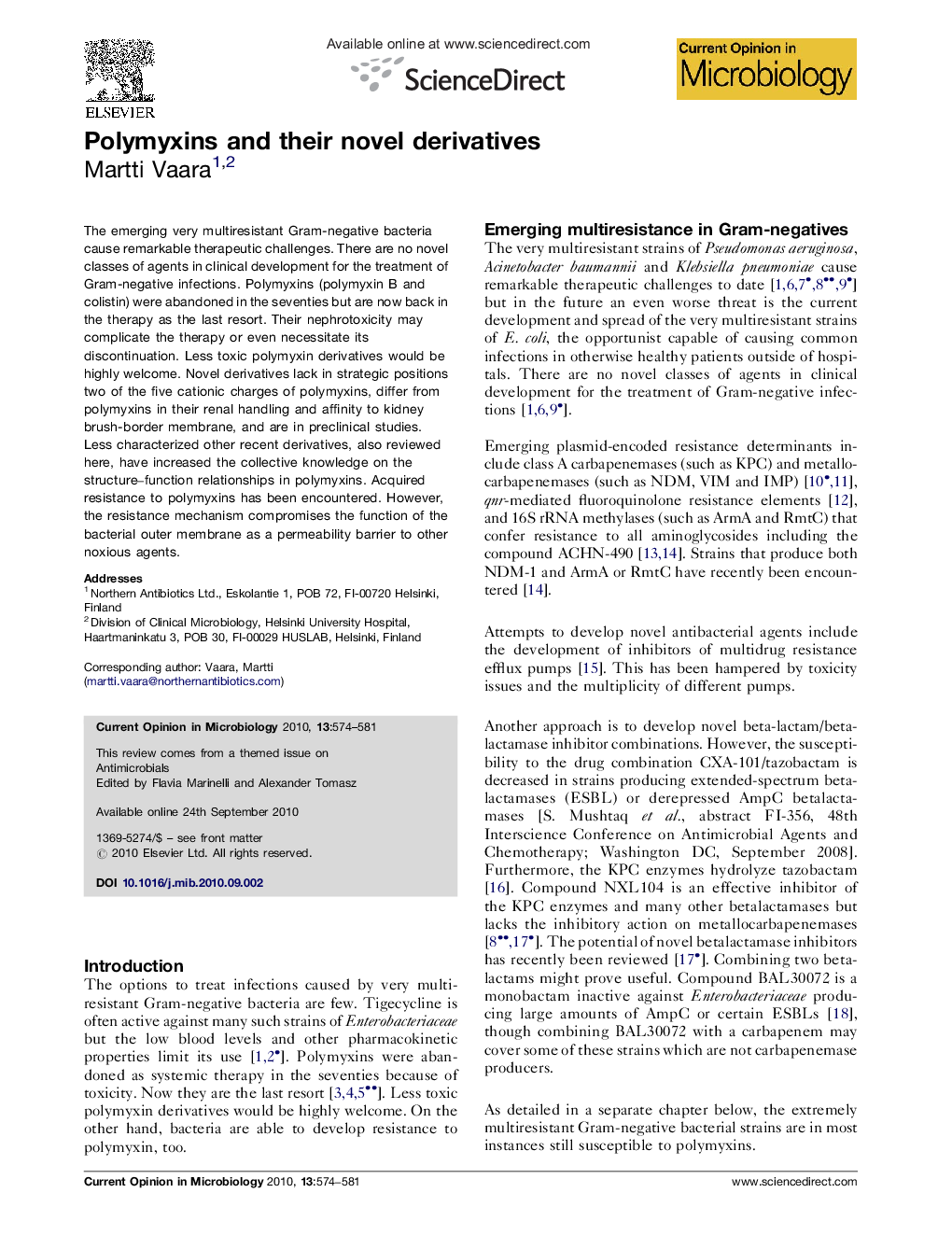| Article ID | Journal | Published Year | Pages | File Type |
|---|---|---|---|---|
| 6132350 | Current Opinion in Microbiology | 2010 | 8 Pages |
Abstract
The emerging very multiresistant Gram-negative bacteria cause remarkable therapeutic challenges. There are no novel classes of agents in clinical development for the treatment of Gram-negative infections. Polymyxins (polymyxin B and colistin) were abandoned in the seventies but are now back in the therapy as the last resort. Their nephrotoxicity may complicate the therapy or even necessitate its discontinuation. Less toxic polymyxin derivatives would be highly welcome. Novel derivatives lack in strategic positions two of the five cationic charges of polymyxins, differ from polymyxins in their renal handling and affinity to kidney brush-border membrane, and are in preclinical studies. Less characterized other recent derivatives, also reviewed here, have increased the collective knowledge on the structure-function relationships in polymyxins. Acquired resistance to polymyxins has been encountered. However, the resistance mechanism compromises the function of the bacterial outer membrane as a permeability barrier to other noxious agents.
Related Topics
Life Sciences
Immunology and Microbiology
Microbiology
Authors
Martti Vaara,
